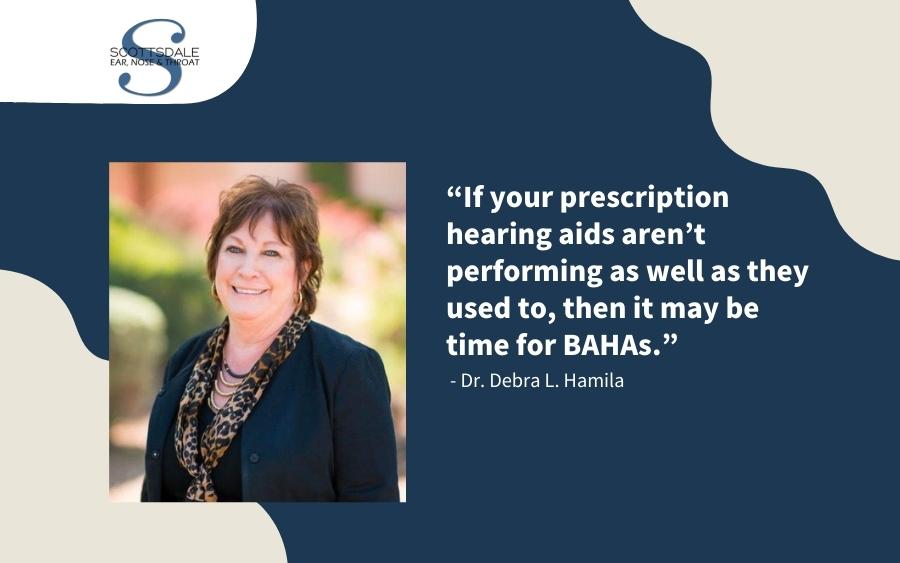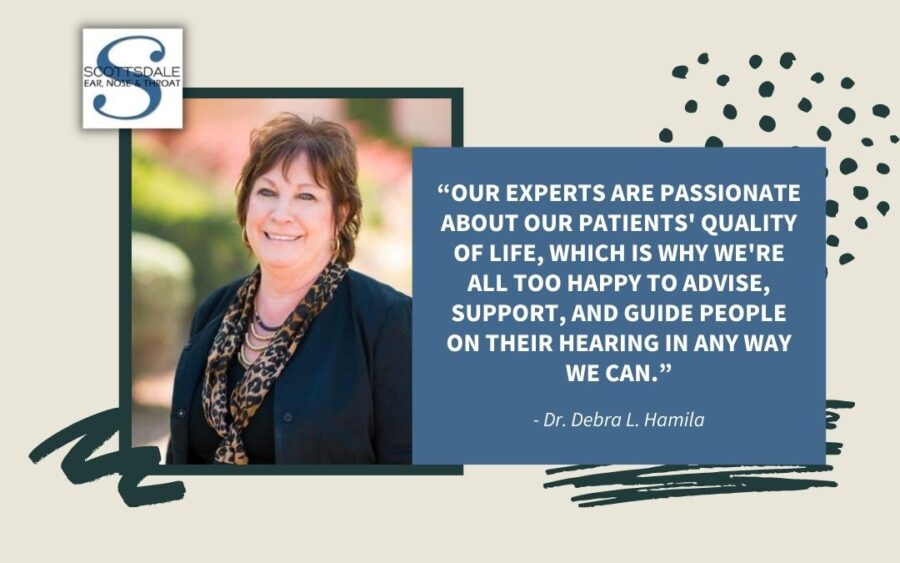As audiologists, we have many tools at our disposal. We take great pride in handling any hearing query we are presented with here in the Valley of the Sun, and bone-anchored hearing aids are another method to do so.
They are an advanced piece of medical circuitry that has helped thousands over the years. They address a particular problem that neither prescription hearing aids nor cochlear implants can address.
Once you have completed the process to see if you are a candidate, this procedure’s success and approval rating are very high among our patients.
Here’s what you can expect if you’re struggling with your hearing and prescription hearing aids aren’t working as well for you anymore.
A Quick Description of BAHAs
Bone-anchored hearing aids provide an avenue for sound to travel more efficiently to your brain for processing. They take the sound waves and convert them to vibrations that all the small bones in your ear can accept and interpret.
This allows the sound waves to bypass the ear canal to be processed by the brain quicker and more accurately.
Who Will Benefit Most from BAHAs?
As audiologists, it’s our mission to treat and assist anyone in our community who struggles with a hearing loss. To do so, we must have all the tools to treat any condition that comes our way. BAHAs are another weapon in our arsenal that helps people who have not had success with traditional prescription hearing aids.
The unique nature of how BAHAs work will help patients whose ear canal is no longer helping to process sound.
This could be necessary for someone who wants to get back to enjoying regular conversations with their family and friends or to help them improve their standing at work.
Hearing is the basis of how we communicate, so finding the best way to help you process sound is our priority. Bone-anchored hearing aids will help those with a severe or prolonged hearing loss where prescription hearing aids are no longer an option.
BAHAs vs. Cochlear Implants vs. Hearing Aids
Determining your best course of action will always start with a comprehensive hearing assessment. This will give us a great idea of how you hear and how to improve it. Once we’ve done that, we can match you with the best diagnosis.
Bone-Anchored Hearing Aids
This device requires a short surgical procedure to implant a titanium receiver that will accept the vibrations sent by the outer sound processor. The receiver will then take the vibrations and apply them to your inner ear bones. This makes it easy for the brain to process, and you will enjoy crystal clear communication.
Cochlear Implants
Also requiring a short surgical procedure, a cochlear implant takes it a step further and bypasses the inner ear. Once you are fitted with the external sound processor and the internal receiver, sound can be relayed directly to your auditory nerve. This helps those with a very severe hearing loss but still not those with a profound hearing loss, unfortunately.
Prescriptions Hearing Aids
The most traditional and popular hearing assistance is a prescription hearing aid. This will help your ear canal capture sound more efficiently so the signal is still intact when it reaches your brain. There are many kinds of prescription hearing aids, and we can help you find the one that’s most beneficial and comfortable.
Over-the-Counter Hearing Aids
As the least powerful of all the hearing assistance solutions, OTCs could still be useful for some who experience a mild or temporary hearing loss. These devices are nothing more than amplifiers in most cases and should be treated as temporary relief. Many draw comparisons of an OTC to the reading glasses you would buy from your local corner store.
What Is the Process of Getting BAHAs?
The first step we must take is to administer a comprehensive hearing assessment. This will tell us precisely what is going on with your hearing so we can make an accurate diagnosis.
If BAHAs are the best option, we move forward with the outpatient surgical procedure involving an ENT surgical specialist inserting a miniature titanium implant into the mastoid bone.
The procedure is concise and typically only uses local anesthesia to reduce complications involved with general anesthesia. MIPS (minimally invasive Ponto surgery) reduces additional complications because it doesn’t require suturing, eliminates scarring, and fosters rapid healing.
Scottsdale ENT Specializes in This
We have the experience and knowledge to determine whether or not BAHAs will suit you.
If you have any questions about your hearing or that of a loved one, then please contact us right away. We are always standing by and ready to answer your questions. Let’s work together to improve your hearing so you can continue with the more important things in life.




